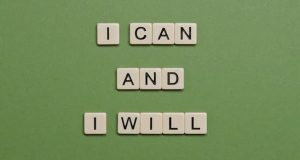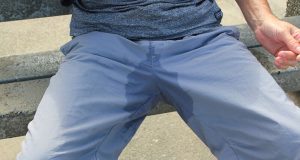By Dr. Virginia Nsitem
PRIDE Pain Specialist
Do your feet throb at the end of the day or do you experience foot pain every time you take a step? Part one of this three-part series will focus on foot pain and what “steps” to take to relieve your discomfort.
Anatomy of the foot
The bones in the foot include the bone at the heel, the bones at the ankle, the bones at the mid foot, and the bones at the toes. The joints between the toes and the mid foot form the ball of the foot and are important for supporting your walking pattern.
The most important bone is the big toe as it is the most important for walking and a common area for pain. The ligaments attach the bones to one another. The most important tendon of the foot is the Achilles tendon that attaches the calf muscles to the heel. The muscles of the foot form the arch of the foot (plantar surface) and provide padding to the sole of the foot.
The main nerve of the foot travels from the lower leg around the inside ankle and to the toes.
Common Foot Problems
Osteoarthritis at the foot: Wear and tear of the joints of the foot. Sometimes bone spurs can develop at the site of the arthritis. Typical pain symptoms include stiffness at the foot and toes, pain and difficulty with weight bearing activities (walking, jumping, running), and swelling at the site of arthritis.
Bunions: Changing of the angle at the big toe causing a “bump” to form. It is a progressive problem that develops over time and sometimes causes pain. Poor footwear can make the problem worse. Symptoms include inflammation and pain at the big toe, numbness at the big toe, difficulty wearing certain foot wear, limping when walking, and pain with standing long periods of time.
Plantar Fasciitis: Pain at the bottom (sole) of the foot. Can be associated with weight gain, pregnancy, change in activity, and tight calf muscles. Patients usually complain of pain first thing in the morning or after sitting for long periods of time (on a chair or driving), and pain and tenderness at the heel. This condition may also be associated with heel spurs.
What treatments help relieve the pain?
The first step to addressing the foot pain is getting a proper diagnosis. It is important to see your chiropractor or physician for a full evaluation. You may be referred for follow-up tests such as an x-ray of the foot.
Your therapy program may include Laser therapy and ice for pain relief and healing, chiropractic techniques to promote proper movement of the joints in the foot, a specific stretching and exercise program, and advise on proper foot wear and foot orthotics. You may also be educated on ways to modify your activity to prevent a recurrence of the pain.
Dr. Virginia Nsitem is a chiropractor specializing in laser therapy for muscle, joint, and nerve injuries, and is a Fellow of the Royal College of Chiropractic Sports Sciences in Canada. She may be reached at (905) 275-4993, or by email at totalhealth@bellnet.ca.
 Pride News Canada's Leader In African Canadian & Caribbean News, Views & Lifestyle
Pride News Canada's Leader In African Canadian & Caribbean News, Views & Lifestyle





